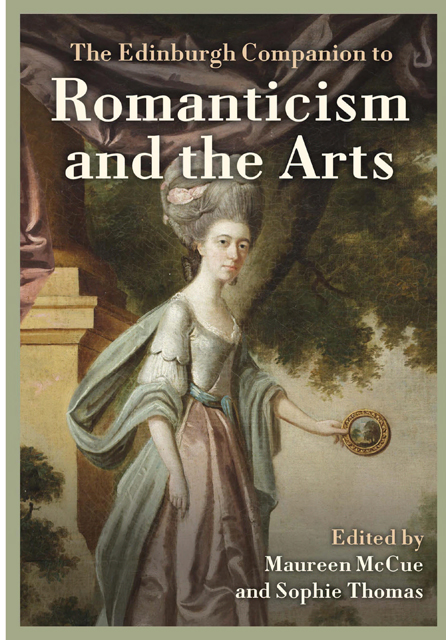22 - Illustrated Magazines and Periodicals: Visual Genres and Gendered Aspirations
Published online by Cambridge University Press: 25 April 2023
Summary
In 1780, the Lady’s Magazine; or Entertaining Companion for the Fair Sex (1770–1832) marked the second decade of its sixty-year run with a gorgeous engraving designed by Robert Dighton (fig. 22.1). By the late 1770s, the conventions of the periodical’s annual frontispieces were well established. All those published in its first decade, like many of those that followed, envision Minerva ushering women readers towards a temple of wisdom. The formula was not wholly original. The goddess had long featured on title pages as a visual shorthand for the cultural benefits of book learning, and Minerva had been a ubiquitous presence in frontispieces to earlier journals such as the Universal and Westminster Magazines, where she typically guides the periodical’s male representative towards fame or immortality (Raven 2002, 49). The Lady’s Magazine adapted this visual tradition by re-appropriating the goddess as a figurehead for a periodical that advocated for women’s education in particular, rather than for learning in general (Batchelor 2018, 377–92).
The 1780 frontispiece underscores the periodical’s sustained ‘vindication’ of women’s intellectual pursuits, but also admits the competing and seductive claims of fashion upon readers’ attention (January 1780, [3]). In this re-imagining of Hercules at the Crossroads, these claims are embodied by the fashionable, playing-card-wielding ‘Folly’, who tempts the magazine’s reader away from Minerva and the wisdom she represents. Which deity the woman at the engraving’s centre will follow is unresolved. An accompanying textual ‘Explanation’ offers no answers, lamenting only that the temple of ‘Folly is resorted to in crouds [sic]’, while that of ‘Wisdom is almost empty’ except for a few who approach it carrying copies of the ‘Lady’s Magazine, as a kind of ticket to obtain their entrance’ (January 1780, 4). While the text is clear that the only real choice is to follow the few on the path to wisdom, Folly’s grip on the woman and command of her gaze in the plate implies that fashion’s seductions might overpower her judgement.
Dighton’s pitting of fashion against wisdom is more than allegorical whimsy. It reflects a tension that the Lady’s Magazine registered throughout its history and in which its illustrations were complexly implicated. The self-declared objective of the Lady’s Magazine was to ‘turn away the female eye from the glitter of external parade, to fix it upon more permanent and more brilliant objects of mental acquisitions’ (‘Address’ (January 1777), [3]).
- Type
- Chapter
- Information
- The Edinburgh Companion to Romanticism and the Arts , pp. 408 - 426Publisher: Edinburgh University PressPrint publication year: 2022



